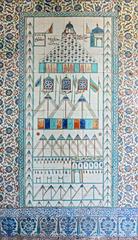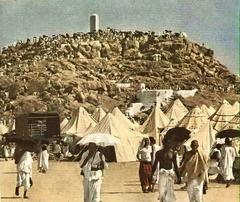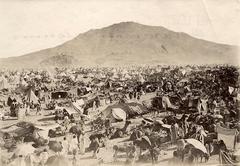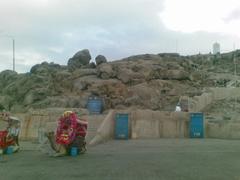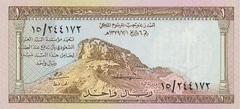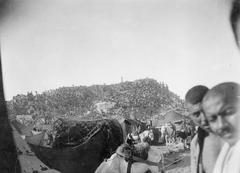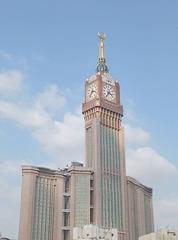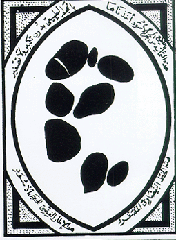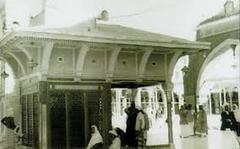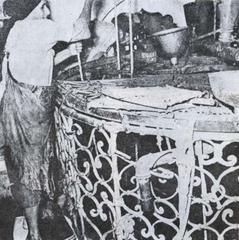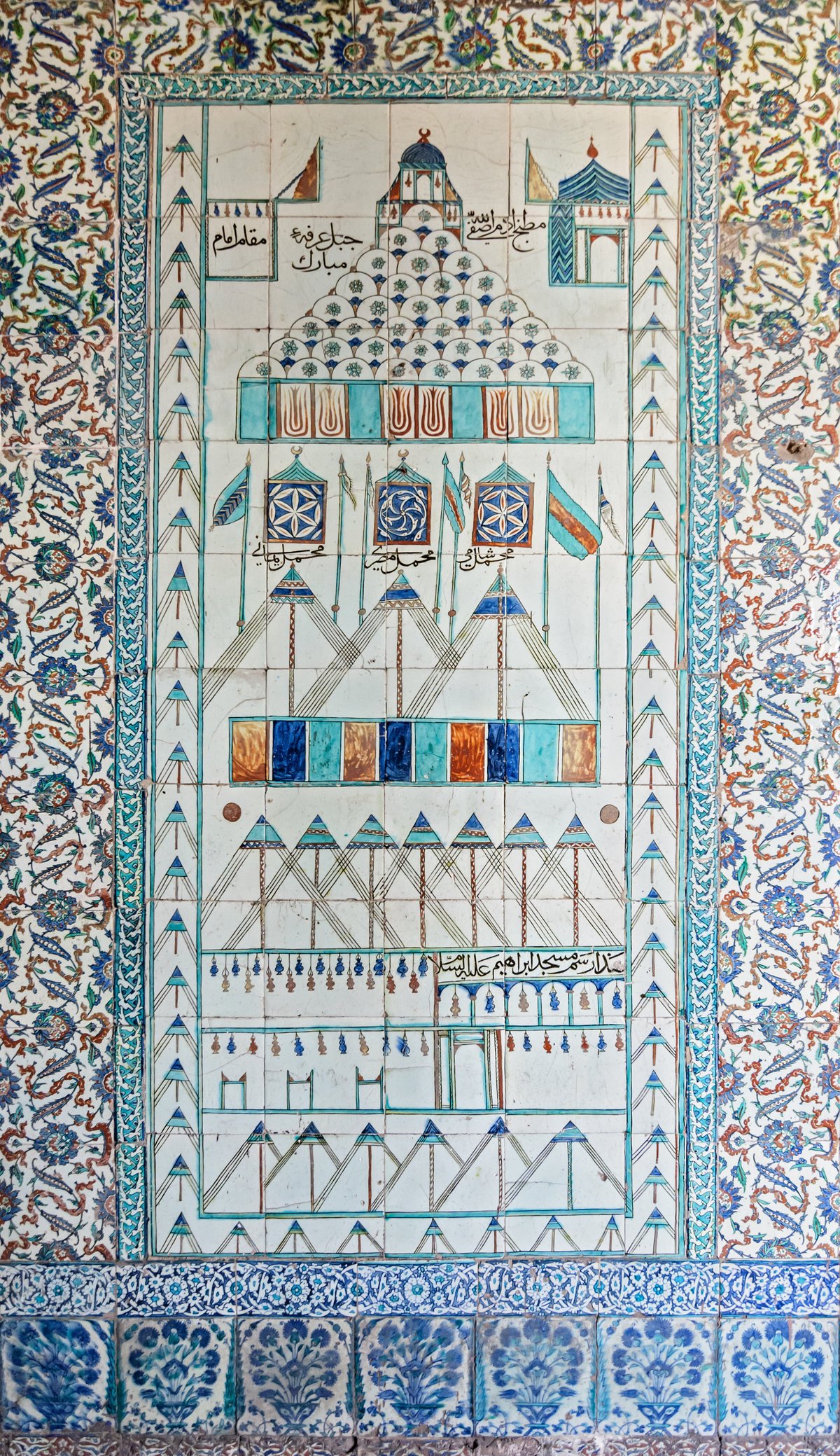
Mount Arafat Visiting Hours, Tickets, and Travel Guide for Mecca’s Sacred Historical Site
Date: 14/06/2025
Introduction
Mount Arafat, also known as Jabal al-Rahmah (“Mountain of Mercy”), is a granite hill located approximately 20 kilometers southeast of Mecca, Saudi Arabia. Revered as one of Islam’s most significant religious landmarks, it is the focal point of the Hajj pilgrimage, where millions of Muslims gather for reflection, prayer, and the wuquf ritual—the standing at Arafat. The site’s legacy is rooted in profound historical, spiritual, and cultural traditions, making it central to the Islamic faith and a destination for pilgrims and visitors year-round.
This comprehensive guide covers Mount Arafat’s historical background, religious significance, visiting hours, ticketing and entry requirements, accessibility, etiquette, health and safety considerations, and practical travel tips. Whether you are preparing for Hajj or visiting outside the pilgrimage season, understanding Mount Arafat’s traditions and practicalities will enrich your experience.
For further details and up-to-date guidance, consult reputable resources such as Welcome Saudi, Muslims Holy Travel, and Islamic Info Center.
Table of Contents
- Introduction
- Historical Background
- Religious Significance
- Practical Visitor Information
- Rituals at Mount Arafat
- Frequently Asked Questions (FAQ)
- Conclusion
- References
Historical Background
Geographical Setting and Physical Description
Mount Arafat rises about 70 meters (230 feet) above the surrounding plain and is situated roughly 20 kilometers southeast of the Grand Mosque in Mecca (Welcome Saudi). The area, known as the Plain of Arafat, spans over 10 square kilometers, accommodating the immense crowds that gather during Hajj. The summit is marked by the white Monument of Mercy, where pilgrims often offer prayers.
Early Islamic and Abrahamic Connections
Mount Arafat’s significance predates Islam, with connections to Prophet Ibrahim (Abraham) and his son Isma’il (Ishmael). In Islamic tradition, they prayed at this site after constructing the Kaaba, demonstrating devotion and submission to God. The most notable event here was Prophet Muhammad’s (peace be upon him) Farewell Sermon in 632 CE, which emphasized unity, equality, and social justice, and marked the completion of the Islamic message (Muslims Holy Travel).
Evolution of Hajj Rituals
The ritual of wuquf at Arafat—standing in supplication from noon to sunset on the 9th day of Dhu al-Hijjah—became central to Hajj. As the Prophet declared, “Hajj is Arafah,” the validity of the pilgrimage depends on being present at Mount Arafat during this period (Islamic Info Center).
Religious Significance
The Day of Arafat (Yawm al-Arafah)
Observed on the 9th of Dhu al-Hijjah, the Day of Arafat is the most sacred day of the Islamic calendar. Millions gather on the plain to participate in the wuquf ritual, symbolizing equality and humility as all don simple white garments (ihram).
Wuquf: The Standing at Arafat
From noon until sunset, pilgrims stand or sit in reflection, prayer, and supplication, seeking forgiveness and divine mercy. This act is the spiritual pinnacle of Hajj; missing wuquf invalidates the pilgrimage (Islamic Info Center).
Spiritual Benefits and Virtues
The Day of Arafat is renowned for its mercy and forgiveness. According to a hadith, “There is no day on which Allah frees more people from the Hellfire than the Day of Arafah” (Sahih Muslim). Sincere prayers and repentance are highly encouraged, with global Muslims also observing the day through fasting and extra worship (Muslims Holy Travel).
Symbolism and Universal Significance
The gathering at Arafat highlights the unity and equality of the Muslim ummah, as all stand together regardless of background. The site also offers a profound opportunity for spiritual renewal, self-reflection, and transformation.
Practical Visitor Information
Visiting Hours and Entry
- Year-round Access: Mount Arafat is open to visitors from dawn until sunset.
- During Hajj: Access is strictly regulated and reserved for registered pilgrims on the 9th of Dhu al-Hijjah, from noon until sunset. Check local guidelines for any changes (Islamic Info Center).
Tickets and Permits
- During Hajj: A valid Hajj permit, obtained through official Saudi platforms (such as Nusuk or authorized agencies), is mandatory. Unauthorized access is prohibited and monitored (Soul of Saudi).
- Outside Hajj Season: No tickets or permits are required for Muslim visitors.
Transportation and Accessibility
- Mount Arafat is accessible by road (approx. 20 km from Mecca). During Hajj, special buses, and pedestrian routes manage the crowds (Airlink Hajj and Umrah).
- Outside Hajj, taxis, private vehicles, and ride-hailing services are available (Adventure Backpack).
- Shuttle services and accessible facilities are provided for those with mobility challenges, but the rocky terrain may still pose difficulties.
Facilities and Infrastructure
- Masjid al-Namirah: Site of the Prophet’s Farewell Sermon; hosts the Arafah prayer and sermon (Trek Zone).
- Tents and Shelter: Air-conditioned tents are provided for pilgrims during Hajj but are not available outside the season (Soul of Saudi).
- Water, Sanitation, and Medical Services: Potable water stations, restrooms, and medical clinics are set up during Hajj. Outside peak times, facilities are limited.
- Food and Refreshments: Distributed by organizers and vendors during Hajj; bring your own supplies outside the season.
- Connectivity: Temporary cell towers ensure coverage during Hajj; bring a power bank due to possible network congestion.
Health and Safety
- Vaccinations: Meningitis and influenza vaccinations are mandatory; check for COVID-19 requirements (Soul of Saudi).
- Hydration: Carry ample water and sun protection; temperatures may exceed 40°C (104°F) in summer (riwaya.co.uk).
- Medical Preparedness: Bring medications, a first aid kit, and maintain hand hygiene. Emergency services are available.
- Crowd Management: Follow directions from security personnel. Stay with your group and know the location of medical stations.
Environmental Considerations
The Saudi government implements regular cleaning, waste management, and conservation efforts. Visitors are encouraged to minimize litter and respect the environment (Welcome Saudi).
Nearby Attractions
- Nimrah Mosque: On the Arafat plain, central to the Hajj sermon (Muslims Holy Travel).
- Masjid al-Haram: The Grand Mosque in Mecca, home to the Kaaba.
- Jabal al-Nour: The mountain where the first Quranic revelation occurred.
- Mina and Muzdalifah: Key sites in the Hajj journey.
Cultural Etiquette
- Dress Code: Men wear two unstitched white cloths (ihram) during Hajj; women wear modest, loose clothing and headscarves. Outside Hajj, modest attire is required (wildtrips.net).
- Behavior: Maintain a quiet, respectful demeanor. Photography is permitted but respect others’ privacy, especially during rituals (tripjive.com).
- Gender Norms: Men and women have designated areas during Hajj; public displays of affection are inappropriate.
- Entry Restrictions: Only Muslims may enter Mecca and Mount Arafat.
Rituals at Mount Arafat
The Central Role of Wuquf
Pilgrims spend the afternoon in supplication, reading Quran, and listening to sermons at Masjid al-Namirah (sohailwaqas.com). After sunset, they proceed to Muzdalifah to continue their Hajj journey (islamonline.net).
For Non-Hajj Visitors
Outside the pilgrimage, Muslims may ascend Mount Arafat, pray at the summit, and reflect on its history (daneelyunus.com).
Frequently Asked Questions (FAQ)
Q: What are the visiting hours for Mount Arafat?
A: Open from dawn to sunset year-round; during Hajj, access is limited to the 9th of Dhu al-Hijjah, noon to sunset (Islamic Info Center).
Q: Is a ticket or permit required?
A: During Hajj, a valid permit is required. Outside Hajj, no ticket is needed for Muslims (Soul of Saudi).
Q: Are there facilities for ablution and restrooms?
A: Yes, especially during Hajj, though they may be crowded.
Q: Can non-Muslims visit Mount Arafat?
A: No, entry is restricted to Muslims only.
Q: Is Mount Arafat accessible for disabled visitors?
A: Some accessible routes and facilities are available during Hajj; advance arrangements are recommended (Soul of Saudi).
Conclusion
Mount Arafat is a cornerstone of Islamic heritage, epitomizing unity, spiritual renewal, and historical depth. Whether you are a pilgrim fulfilling the Hajj or a visitor seeking to experience its sacred atmosphere, understanding visiting hours, entry requirements, etiquette, and health precautions is essential for a meaningful and safe journey. Ongoing infrastructure improvements and environmental initiatives ensure Mount Arafat remains accessible and preserved for generations to come.
For the latest updates, download the Audiala app, consult Soul of Saudi, Islamic Info Center, and Welcome Saudi, and follow our social media channels for continuous insights and travel tips.
References and Further Reading
- Welcome Saudi
- Muslims Holy Travel
- Soul of Saudi
- Islamic Info Center
- Trek Zone
- Airlink Hajj and Umrah
- Adventure Backpack
- sohailwaqas.com
- daneelyunus.com
- makkah2madinah.com
- wildtrips.net
- tripjive.com
- riwaya.co.uk
- thrillophilia.com
- islamonline.net
